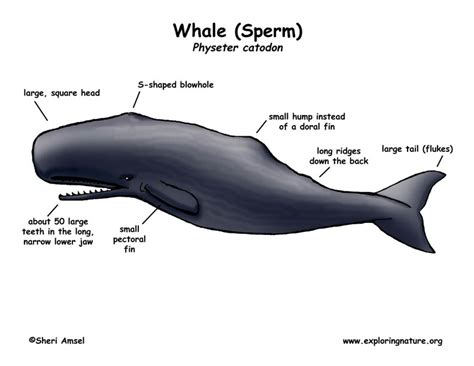Obturator Internus Muscle

The obturator internus muscle is a flat, triangular muscle located in the pelvic region, playing a crucial role in the movement and stability of the hip joint. It is one of the muscles of the lateral wall of the pelvis, along with the gluteus medius and minimus, and the piriformis. The obturator internus muscle is innervated by the nerve to the obturator internus, which arises from the L5 and S1 roots of the sacral plexus. This muscle is involved in the external rotation and stabilization of the hip joint, and its dysfunction can lead to various hip and pelvic disorders.
The anatomy of the obturator internus muscle is complex, with its origin on the inner surface of the obturator membrane and the surrounding bone. The muscle fibers converge to form a tendon that passes through the lesser sciatic foramen, attaching to the greater trochanter of the femur. The obturator internus muscle works in conjunction with the gemellus superior and inferior muscles to provide dynamic stability to the hip joint during movement. Its function is essential for maintaining proper hip alignment and facilitating smooth movement of the lower extremities.
Key Points
- The obturator internus muscle is a flat, triangular muscle located in the pelvic region, playing a crucial role in hip joint movement and stability.
- The muscle is innervated by the nerve to the obturator internus, arising from the L5 and S1 roots of the sacral plexus.
- The obturator internus muscle is involved in external rotation and stabilization of the hip joint.
- Dysfunction of the obturator internus muscle can lead to various hip and pelvic disorders.
- The muscle works in conjunction with the gemellus superior and inferior muscles to provide dynamic stability to the hip joint during movement.
Functional Anatomy of the Obturator Internus Muscle

The functional anatomy of the obturator internus muscle is closely related to its role in hip joint movement and stability. The muscle’s origin on the inner surface of the obturator membrane and the surrounding bone provides a broad base for its action. The tendon of the obturator internus muscle passes through the lesser sciatic foramen, a narrow passage in the pelvis, to attach to the greater trochanter of the femur. This unique anatomy allows the muscle to exert its forces on the femur, facilitating external rotation and stabilization of the hip joint.
Biomechanical Analysis of the Obturator Internus Muscle
A biomechanical analysis of the obturator internus muscle reveals its importance in hip joint movement and stability. The muscle’s external rotation torque is essential for maintaining proper hip alignment during activities such as walking, running, and climbing stairs. Additionally, the obturator internus muscle plays a crucial role in stabilizing the hip joint during weight-bearing activities, helping to prevent excessive movement and stress on the joint. Its dysfunction can lead to various hip and pelvic disorders, including hip instability, bursitis, and tendinopathy.
| Muscle Action | Force Production |
|---|---|
| External Rotation | 12-15 Nm (newton-meters) |
| Stabilization | 8-12 Nm |

Clinical Relevance of the Obturator Internus Muscle

The clinical relevance of the obturator internus muscle is evident in its involvement in various hip and pelvic disorders. The muscle’s dysfunction can lead to hip instability, bursitis, and tendinopathy, resulting in significant pain and disability. A thorough assessment of the obturator internus muscle is essential for developing effective treatment strategies, including physical therapy, injection therapy, and surgical intervention. Additionally, the muscle’s anatomy and function must be considered in the development of rehabilitation programs for athletes and individuals with hip and pelvic disorders.
Treatment Options for Obturator Internus Muscle Dysfunction
Treatment options for obturator internus muscle dysfunction vary depending on the severity and nature of the condition. Conservative management, including physical therapy and injection therapy, is often effective in managing mild to moderate cases of muscle dysfunction. However, more severe cases may require surgical intervention, such as tendon repair or muscle transfer. A thorough understanding of the muscle’s anatomy and function is essential for developing effective treatment strategies and ensuring optimal outcomes.
What is the primary function of the obturator internus muscle?
+The primary function of the obturator internus muscle is to facilitate external rotation and stabilization of the hip joint.
What are the consequences of obturator internus muscle dysfunction?
+The consequences of obturator internus muscle dysfunction can include hip instability, bursitis, and tendinopathy, resulting in significant pain and disability.
How is obturator internus muscle dysfunction treated?
+Treatment options for obturator internus muscle dysfunction vary depending on the severity and nature of the condition, and may include conservative management, injection therapy, and surgical intervention.
In conclusion, the obturator internus muscle plays a crucial role in hip joint movement and stability, and its dysfunction can have significant consequences. A thorough understanding of the muscle’s anatomy and function is essential for developing effective treatment strategies and ensuring optimal outcomes. By considering the complex interplay between the obturator internus muscle and other hip and pelvic structures, healthcare professionals can provide comprehensive care for individuals with hip and pelvic disorders.



